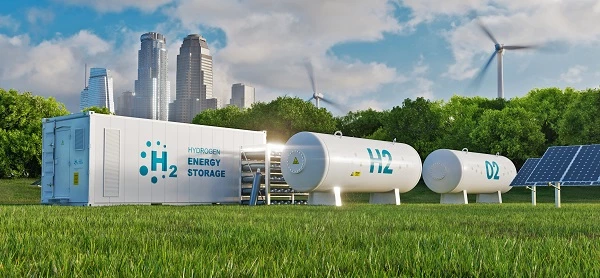A new supply chain model will enable the hydrogen economy on the seas
Researchers discover a cause of rapid ice melting in Greenland / The Atlantic Ocean circulation will collapse around the middle of the century, scientists predict
Hydrogen has been touted as the clean fuel of the future because it can be produced from water and emits no carbon dioxide. However, it is currently costly to transport over long distances and there is no infrastructure in place to facilitate this.
Researchers from Australia, Singapore, and Germany have developed a new supply chain model that successfully guides the international transport of hydrogen and its embodied energy. Recent publication of the full report in the peer-reviewed journal Energy Conversion and Management.
Associate Professor Kaveh Khalilpour from the University of Technology Sydney (UTS) and the report's author stated that the design of the supply chain is essential for making hydrogen economically viable.
"We looked at the renewable hydrogen export from Australia to Singapore, Japan, and Germany. Surprisingly, the analysis revealed that it makes a difference whether the objective is to export hydrogen atoms or hydrogen energy. Each option results in a distinct supply chain system. "Therefore, a thorough understanding of the whole system is necessary for correct decision making," said Associate Professor Khalilpour.

"The abundance of renewable energy resources in Australia, as well as its stable economy, means the country can attract investments in building these green value chains in our region and even as far away as Europe."
Hydrogen is anticipated to assist in diversifying Australia's renewable energy resource beyond solar and wind energy. This is deemed essential for the nation's energy security as well as climate change mitigation.
"Hydrogen is just an energy carrier, i.e. not a primary energy source, and thus only a means to an end for transporting renewable energy from one place to another.
"The key business question around the emerging hydrogen economy is whether commodities such as green hydrogen, methanol or ammonia can be exported profitably and competitively also over long distances and across the oceans, thus bringing green energy to other places in the world.
"If this is so, this will also have major international energy and climate policy implications," said Professor Reinhard Madlener, co-lead of the project, from RWTH Aachen University, Germany.
Professor Iftekhar Karimi from the National University of Singapore and the project's co-leader stated, "Our model suggests that methanol shows great promise as a chemical carrier for exporting renewable energy from Australia at low cost."
Journal Reference: Muhammad Aadil Rasool, Kaveh Khalilpour, Ahmad Rafiee, Iftekhar Karimi, Reinhard Madlener. Evaluation of alternative power-to-chemical pathways for renewable energy exports. Energy Conversion and Management, 2023; 287: 117010 DOI: 10.1016/j.enconman.2023.117010
End of content
Không có tin nào tiếp theo
